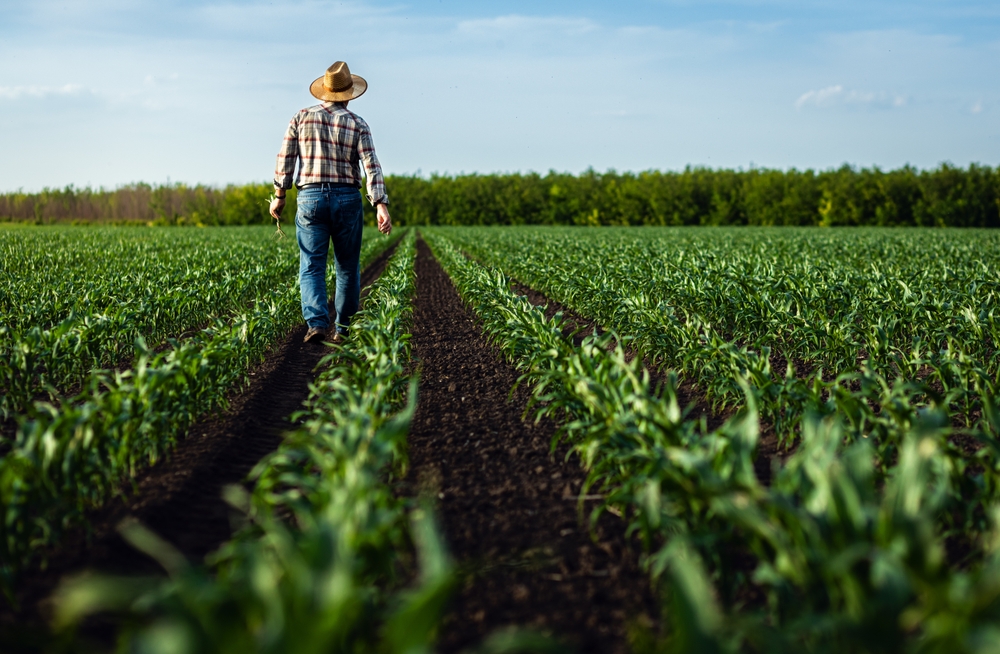Farmers Contribute $203B to US GDP — Mostly Paid by Checks
- Farmers have, by necessity, a unique relationship with paper checks
- They also wait days, if not weeks, for paper checks to clear
- End-user education is a crucial approach
In a new blog post and video, PYMNTS points out that "the only thing bigger than the agriculture sector’s contribution to daily sustenance could be its reliance on paper payments."

In 2023, agriculture, food, and related industries contributed a staggering $1.5 trillion to the U.S. GDP, representing about 5.6% of the total economy. Despite this major economic role, farmers — who contributed $203 billion to that figure — are still primarily relying on an outdated method of handling their finances: paper checks.
“One big paper check at a time is what we’re still doing in agriculture,” Jake Joraanstad, CEO at Bushel, told PYMNTS’ Karen Webster.
A Different Income Flow
Mr. Joraanstad explains that farmers have, by necessity, a unique relationship with paper checks.
They don’t rely on a regular paycheck. Instead, they draw from lines of credit throughout the year to cover expenses, and when they do get paid — often with one massive check for millions of dollars — it’s primarily to repay these loans.
Joraanstad points out that in today's world, farmers are comfortable with their current payment process. However, there are challenges, including the time it takes for checks to clear. However, he is incorrect when he states that "Farmers often wait days, if not weeks, for paper checks to clear."
As we know, FIs are required to clear checks within 2 business days according to Reg CC. There are some cases where the checks can receive a hold if there is suspected fraud, but putting this a case-by-case, rather than the norm.

Younger Farmers Ushering in Digital Payments
As with many different industries, the younger generation is looking to inject new technologies into legacy processes.

Younger farmers in particular, as well as their younger buyer peers, are driving this shift. While the average age of U.S. farmers is in the 60s, younger generations are taking over family farms and are more digitally savvy. These younger farmers are more open to using digital tools, and as they take control of operations, the industry is slowly moving toward greater adoption of digital platforms.
However, it's not as simple as swapping checks for a digital payment. Each platform will have different associated fees. In the banking industry, sending an ACH wire payment from one account to another is straight-forward with standard fees; other payment platforms. however, can charge higher fees and even a percentage of the amount. This is particularly an issue with the large checks being written in agriculture. Even a 1% surcharge could add up to thousands in fees.
Each platform will have different associated fees. While in the banking industry, sending an ACH wire payment from one account to another is straight-forward with standard fees; other payment platforms, can charge higher fees and even a percentage of the total amount. This is particularly an issue with the large checks being written in agriculture. Even a 1% surcharge could add up to thousands in fees.
We've previously noted that many industries still use checks as their preferred payment method (not just agriculture), with the 2024 AFP Payments Fraud and Control Survey Report reporting "75% of survey respondents report that their organizations use checks, and nearly 70% of these organizations do not have plans to discontinue the use of checks over the next two years."
With all this in mind, financial institutions have an opportunity to continue their support of these industries by maintaining investment in AI technologies to help streamline check payments, creating a more efficient payments process for all.